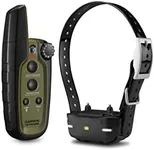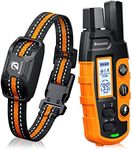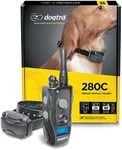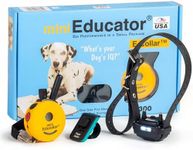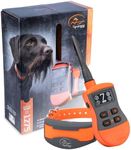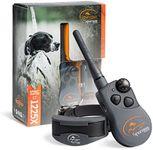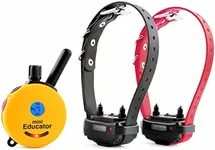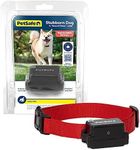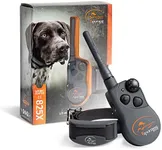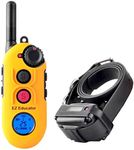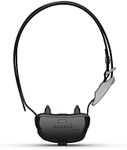Buying Guide for the Best E Collar For Dogs
Choosing the right e-collar for your dog is an important decision that can impact your pet’s comfort, safety, and training success. E-collars, also known as electronic collars or remote training collars, are used for training, behavior correction, and sometimes for containment. The key to picking the best e-collar is understanding your dog’s needs, temperament, and the specific training goals you have. Always prioritize humane use and ensure the collar is a tool for positive reinforcement rather than punishment. Consider your dog’s size, coat type, and sensitivity, and look for features that match your training style and environment.Stimulation ModesStimulation modes refer to the different ways an e-collar can communicate with your dog, such as static shock, vibration, tone (sound), or a combination. This is important because different dogs respond better to different types of feedback. Some collars offer only one mode, while others provide several. If your dog is sensitive or you prefer a gentler approach, look for collars with vibration or tone options. For more stubborn dogs or specific training needs, static stimulation may be necessary, but always start with the lowest setting. Choose a collar with modes that align with your training philosophy and your dog’s temperament.
Stimulation LevelsStimulation levels are the range of intensity settings you can choose from for each mode. This matters because it allows you to fine-tune the collar’s feedback to your dog’s sensitivity. Collars with more levels offer greater precision, which is especially useful for dogs that are either very sensitive or very stubborn. Low-level collars may be enough for small or timid dogs, while high-level collars might be needed for larger or more determined breeds. Select a collar with enough levels to allow gradual adjustment, ensuring you can find the minimum effective level for your dog.
RangeRange indicates how far the remote can communicate with the collar, usually measured in yards or meters. This is crucial depending on where you plan to use the collar. Short-range collars (up to 300 yards) are suitable for home or backyard training, while medium-range (300-800 yards) work well for parks or larger properties. Long-range collars (over 800 yards) are best for hunting, hiking, or off-leash training in wide-open spaces. Consider your typical training environment and choose a range that covers the distances you expect to work within.
Collar Size and AdjustabilityCollar size and adjustability refer to the physical fit of the collar on your dog’s neck. This is important for comfort and effectiveness. Collars that are too loose may not deliver consistent feedback, while those that are too tight can cause discomfort or injury. Most e-collars are adjustable, but check the minimum and maximum neck sizes to ensure a good fit for your dog’s breed and age. For growing puppies or very small/large breeds, make sure the collar can be adjusted as needed.
WaterproofingWaterproofing describes whether the collar and remote can withstand exposure to water. This is important if your dog likes to swim, plays in the rain, or if you train in wet environments. Some collars are only water-resistant (splash-proof), while others are fully waterproof and can be submerged. If your dog will be around water often, choose a fully waterproof collar to ensure durability and consistent performance.
Battery Life and ChargingBattery life and charging options determine how long the collar and remote will work before needing a recharge or battery replacement. This matters for convenience and reliability, especially during long training sessions or trips. Some collars use rechargeable batteries, while others use replaceable ones. Longer battery life is helpful if you don’t want to charge frequently. Consider your usage habits and pick a collar with a battery system that fits your routine.
Safety FeaturesSafety features include things like automatic shut-off, lockout modes, or warning indicators to prevent accidental overstimulation. These are important to protect your dog from harm and to give you peace of mind during training. If you’re new to e-collars or want extra reassurance, look for models with built-in safety mechanisms. This helps ensure the collar is used responsibly and humanely.

